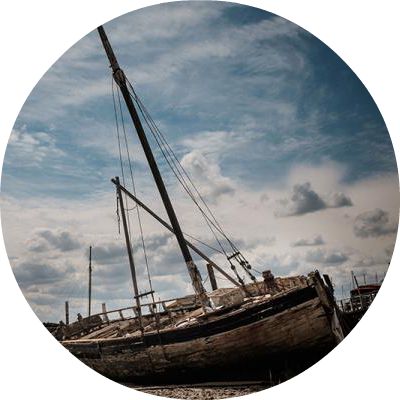Graveyard of Lost Species
About Graveyard of Lost Species
“How do you make a monument that, rather than creating a smooth ideological space in which all people are expected to feel and believe in the same way, instead accounts for difference and allows for the contradictions and conflict of history, that lets all the different voices speak out? It might be a community but there is not unity of story – there are vastly indifferent interpretations of what’s going on. We are creating an anti-monument that will come apart, like the memories, over time.” Steve Kurtz
'Graveyard of Lost Species' is an ambitious collaborative project and public monument by artists YoHa and Critical Art Ensemble in partnership with The Arts Catalyst
Graveyard of Lost Species involves recording 'species' from wildlife, marine creatures, livelihoods, fishing methods, landmarks and local dialects that once flourished in the Estuary and are now disappearing. The artists are leading a set of enquiries with people in Leigh-on-Sea and Southend to gather local knowledge of and expertise about 'lost species'.
From this research, the artists will create a public monument, using a local boat wreck, the 'Souvenir' - a 40ft 12 ton Thames bawley, rescued from the estuary mud. This summer, the boat will be cleaned and re-configured, whilst sited in a prominent public setting on Belton Way, the main thorougfare between Leigh-on-Sea station and the old town.
Working with local craftsmans, the artists will laser cut the lost species into the vessel’s surface. Once the text has been cut into the boat’s surface and interior, she will be sailed back onto the marshes as a part of the local landscape again.
The project is intended to act as a monument of Leigh’s past and future, as well as to uncover and highlight local knowledge about the changing ecology, society and industry of the Thames estuary.
A call out to local people of Leigh-on-Sea and Southend
We are seeking stories and knowledge of Leigh-on-Sea and Southend's lost history, culture, species, ingredients and ways of life. The artwork is dedicated to the people of Leigh and Southend and they are instrumental in how the artwork will be developed. The words engraved onto it will be directly informed by local people. Updates will be listed shortly.
Please contact us for more information if you would like to get involved and speak with one of our local researchers:
claudia.lastra@artscatalyst.org
You can also visit YoHa's Wrecked website for updates and information:
http://yoha.co.uk/graveyard
The wreck is currently being cleaned and worked on at Belton Way, Leigh-on-Sea in Southend. We welcome visitors and passers by to ask questions and get involved.
THE ARTISTS
Graveyard of Lost Species is led by artist group YoHa, Graham Harwood and Matsuko Yokokoji, who have worked together since 1994 and are local Leigh-on-Sea residents. YoHa's polemical vision and technical tinkering has powered several celebrated collaborations, establishing an international reputation for pioneering critical art and socially engaged projects. Harwood and Yokokoji co-founded the pioneering artists’ group Mongrel (1996-2007) and established the MediaShed, a free-media lab (2005-2008), which reached international fame through its film ‘Duallists’ shown at over 30 film festivals around the world.
Critical Art Ensemble will undertake a residency in Leigh-on-Sea, building on research from two previous visits, working alongside Yoha on Lost Species. Since 1987, Critical Art Ensemble has explored the intersections between art, critical theory and political activism. Projects have included recreating historical bio-warfare experiments off the coast of Scotland; setting up a lab in a gallery to reverse engineer genetically modified seeds; and planting endangered flowers on public lands and urban social space threatened by property developers.
FUNDERS AND SUPPORTERS
This project is supported by The Arts Council England and The Arts Catalyst. Many thanks to Leigh Town Council, Southend Borough Council, Metal (Southend) and Belton Way Small Craft Club with advice from Natural England and Essex Wildlife Trust.
